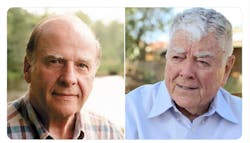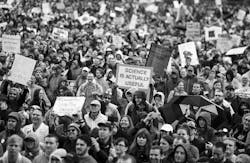On January 28, 1969, at the same time that I was in school receiving birthday wishes from friends, Union Oil’s Platform A started spilling oil off the coast of Santa Barbara, CA. It wasn’t until years later, when I moved to Pierpont Beach in Ventura (with a view of the Channel Islands), that I fully realized the true significance of that accident.
That was the beginning of what, at the time, would become the largest oil spill in U.S. history. Fifty-five years later, it still ranks third, behind the Exxon Valdez and Deepwater Horizon disasters. Many attribute the Santa Barbara spill as being the direct catalyst for the first Earth Day in 1970.
Although there is no doubt that it helped to inspired that first Earth Day celebration, many others (including me), believe that the original inspiration for Earth Day came from the 1962 publication of Rachel Carlson’s Silent Spring. (How many of you got that question right in this month's HPAC Quiz on the History of Earth Day?)
Carson's best-selling book exposed the hazards of pesticides, particularly DDT, and for the first time, it aroused widespread environmental consciousness among the general public. In addition to helping inspire the creation of Earth Day, it ultimately led to the creation of the U.S. Environmental Protection Agency (signed into law by Republican President Richard Nixon) and the banning of DDT, as well as the regulation of other pesticides long-known-to-be hazardous to human health.
For those readers not familiar with the history of Earth Day, here’s a brief synopsis:
In 1969, when the Santa Barbara oil spill occurred, U.S. military presence in Vietnam had been building for at least six years, and millions of Americans were protesting continued U.S. involvement. Anti-war demonstrations, especially on college campuses, represented the largest public protests in U.S. history. An early opponent of the Vietnam War, former Wisconsin governor and then U.S. senator, Democrat Gaylord Nelson, was best known for his environmental advocacy.
Shrewdly taking a page from the student activism of the time, Sen. Nelson proposed an environmental teach-in on college campuses and was able to partner with California Republican Rep. Pete McCloskey, Jr. as his co-chair. One of those anti-war student activists was Denis Hayes, the former student body president at Stanford University, then a graduate student at Harvard.
Nelson recruited Hayes to organize and coordinate the first Earth Day, and he selected April 22, 1970, for the event. It was the Tuesday between Spring Break and final exams, so most students would be on their campuses that day, Hayes reasoned. The event was celebrated on some 2,000 college campuses and in hundreds of communities across the country, and April 22 has been recognized as Earth Day since then.
Earth Day is believed to be the largest secular event in the world.
During the next 10 years, leading up to Earth Day 1980, a vast array of significant environmental legislation was passed by Congress, including the Endangered Species Act, the Marine Mammal Protection Act, the Superfund Act, the Toxics Substances Control Act, the Resource Conservation and Recovery Act, the Clean Air Act, and the Clean Water Act. By that Earth Day, in fact, DDT and leaded gasoline were no longer in use in the U.S.
By 1990, Earth Day was a global event, with more than 140 countries participating. Twenty years later, in 2010, on the 40th anniversary of Earth Day, nearly one billion people joined more than 200 government leaders in more than 39 countries to advocate for sustainable green economies. Not surprisingly, the UN chose Earth Day 2016 for the signing of the Paris Agreement.
Of course, on Earth Day 2020, the 50th Anniversary, the pandemic forced many of the planned activities online. Even so, It is estimated that 1 billion people worldwide participated in some type of Earth Day activity, and more than 100 million streamed a three-day 'Earth Day Live' event.
This year, there has even been some good news in the weeks leading up to Earth Day 2024...
Just last week, on April 9, the EPA finalized rules that dramatically reduce the number of people facing elevated cancer risks because of their exposure to air pollution. Under the new rules, the emissions of such carcinogenic chemicals as ethylene oxide and chloroprene will be reduced by 80% and benzene and vinyl chloride emissions will also be cut. That’s an estimated annual reduction of 6,200 tons in total toxic emissions. According to the EPA, the number of people who have elevated cancer risks because they live within six miles of plants producing those chemicals will drop by 96%, and the risk to those who live within 31 miles of those plants are expected to fall by about 60%.
That same week, it also finalized the first drinking water standard for per- and polyfluoroalkyls or PFAS. These substances, known as “forever chemicals” because of their long persistence, have been linked to increased risks of cancer, low birth weights in newborns, high cholesterol, and liver, thyroid, and immune disorders.
Who knows? Maybe by Earth Day 2025, we’ll even be able to report a significant reduction in greenhouse gas emissions and global temperature trends, as well.
####
A contributor to HPAC Engineering since 2013 and a member of its editorial advisory board, the author is a principal at Sustainable Performance Solutions LLC, a south Florida-based engineering firm focusing on energy and sustainability. He can be reached at [email protected].

